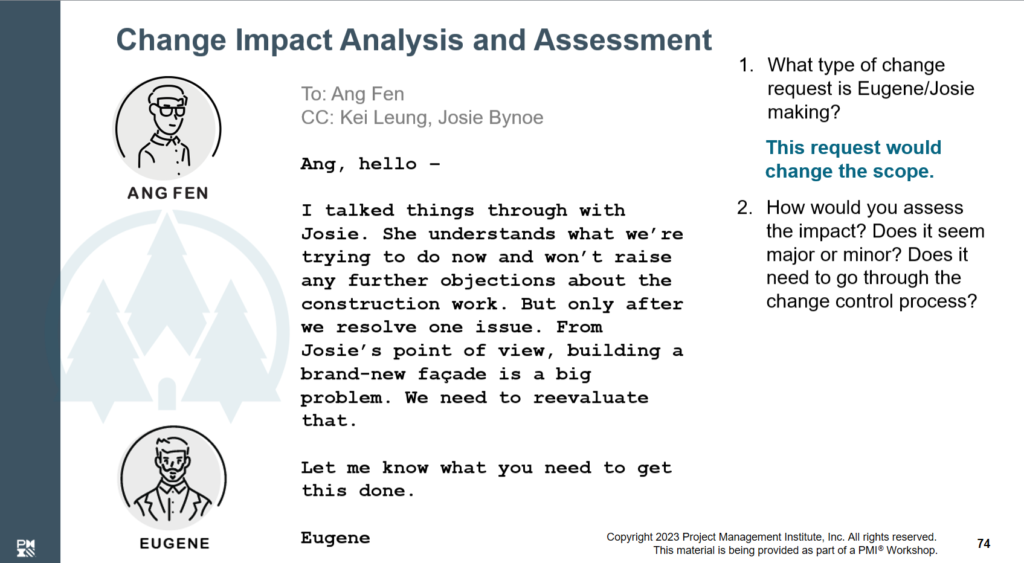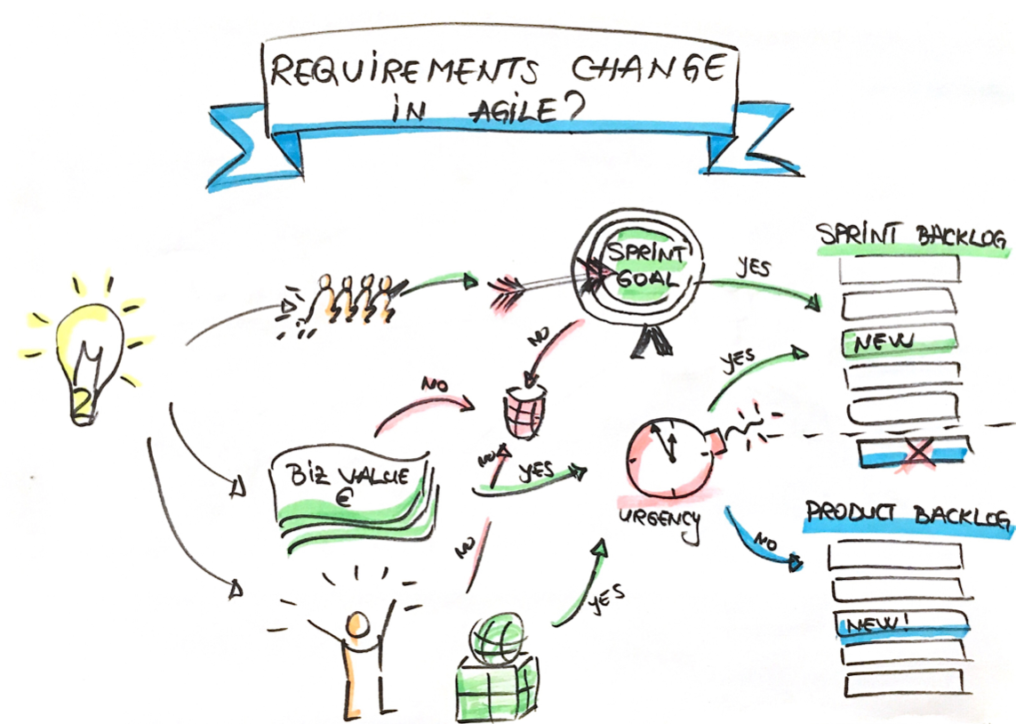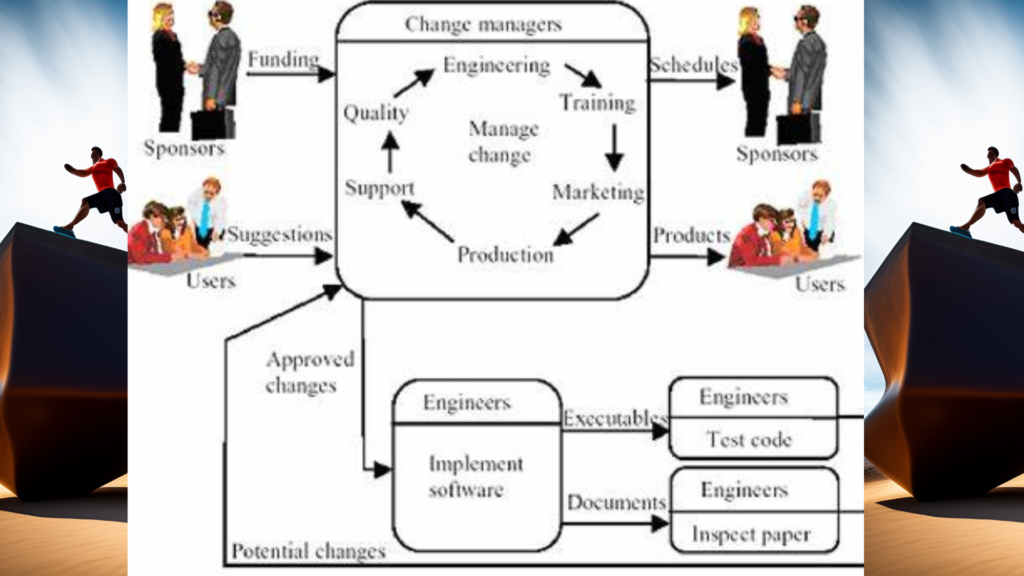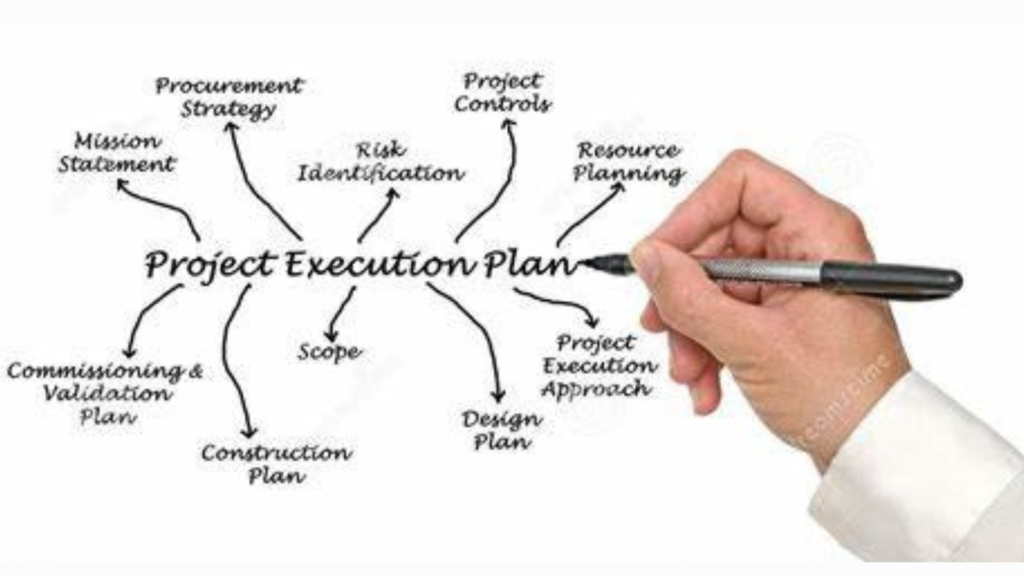Mastering the Art of Dealing with Constantly Changing Project Requirements and Scope
Table of Contents
Introduction:
Navigating the complexities of constantly changing project requirements and scope is a common challenge faced by project managers. In this fast-paced business landscape, projects are often subject to evolving priorities, shifting stakeholder needs, and dynamic market conditions. Effectively managing these changes is vital to ensure project success. In this blog, we will explore strategies and techniques to master the art of dealing with constantly changing project requirements and scope, enabling project managers to adapt and thrive in the face of uncertainty.
Understanding the Nature of Changing Project Requirements and Scope
Constantly changing project requirements and scope pose significant challenges for project managers. Understanding the nature of these changes is crucial to effectively navigate them. One common cause of changes is external factors, such as shifting market trends or evolving regulatory requirements. These factors can directly impact the project’s objectives, timelines, and deliverables. Additionally, internal factors, like stakeholder feedback and changing business goals, can contribute to changes in Changing Project Requirements and Scope. It is essential for project managers to identify and analyze these causes, as they provide valuable insights into the nature and potential impact of the changes.

The impact of changing requirements and scope on a project cannot be underestimated. Changes can significantly influence project timelines, resources, and budgets. As requirements evolve, project managers must assess the impact on the project’s overall objectives and carefully manage stakeholder expectations. The success of a project relies on the ability to adapt and accommodate changes effectively while minimizing disruptions. Recognizing the challenges and potential risks associated with changes is critical for project managers to proactively address and mitigate these risks. By understanding the nature and impact of Changing Project Requirements and Scope, project managers can better prepare themselves to navigate the complexities and achieve successful project outcomes.
Recognizing the Causes and Triggers of Changes:
Recognizing the causes and triggers of changes is essential for project managers to effectively manage evolving project requirements and scope.
External factors such as market trends and regulatory requirements:
External factors, such as market trends and regulatory requirements, can act as catalysts for change. Market trends are constantly evolving, driven by factors like consumer preferences, technological advancements, and industry dynamics. Project managers need to stay vigilant and analyze market trends to identify potential changes that may impact project requirements. Similarly, regulatory requirements play a critical role in shaping project parameters. Changes in regulations or compliance standards can necessitate adjustments in project deliverables and scope to ensure adherence.

Internal factors like stakeholder feedback and evolving business goals
Internal factors, like stakeholder feedback and evolving business goals, also contribute to changes in project requirements and scope. Stakeholder feedback is an invaluable source of insights that helps project managers understand the evolving needs and expectations of key stakeholders. By actively soliciting and incorporating feedback, project managers can respond to changing stakeholder priorities and align project outcomes accordingly. Furthermore, evolving business goals can trigger changes in project requirements as organizations adapt their strategies and objectives. Project managers must closely collaborate with business stakeholders to stay informed about evolving goals and ensure project alignment to maximize business value.
By recognizing the causes and triggers of changes, both external and internal, project managers can proactively respond to evolving project requirements and scope. This allows for timely adjustments, effective decision-making, and ultimately, successful project outcomes.
Impact of Changing Requirements and Scope:
Effectively managing Changing Project Requirements and Scope is crucial, as they can have a significant impact on various aspects of a project. One key area affected is project timelines, as changes in requirements and scope often lead to adjustments in project schedules. Project managers need to carefully evaluate the impact of these changes on timelines and make necessary adjustments to ensure that project milestones are met without compromising quality.
- Effect on Project Timelines, Resources, and Budgets: Changing Project Requirements and Scope have a direct impact on project timelines, resources, and budgets. When project parameters change, it often leads to adjustments in the project schedule. Project managers need to carefully assess the implications of these changes on timelines and make necessary adjustments to ensure that project milestones are met without compromising quality. Moreover, changes in requirements and scope can also impact the allocation of project resources. Project managers must reevaluate the resource needs to ensure that the necessary expertise, manpower, and tools are available to fulfill the revised project requirements. Additionally, modifications in scope can have financial implications, requiring adjustments to the project budget to accommodate additional resources or deliverables.

- Influence on Stakeholder Satisfaction and Project Deliverables: Changing requirements and scope can significantly influence stakeholder satisfaction and project deliverables. When stakeholders’ expectations are not effectively managed and met due to changes, it can lead to dissatisfaction and a lack of confidence in the project’s success. Project managers must proactively manage stakeholder expectations by involving them in the change management process, providing clear communication, and ensuring transparency. Additionally, changes in requirements and scope may necessitate modifications, additions, or removals of certain project deliverables to align with the revised project objectives. Adapting to these changes while maintaining stakeholder satisfaction is crucial for project success and building positive relationships with project stakeholders.
Establishing Effective Change Management Processes
Establishing effective change management processes, including a robust change management framework and clear communication channels for change requests and approvals, is essential for successfully managing Changing Project Requirements and Scope. These processes provide structure, transparency, and accountability, ensuring that changes are properly evaluated, approved, and implemented, while minimizing potential disruptions and maintaining project alignment.

- Developing a Robust Change Management Framework:
- Defining the change management process and protocols– To effectively manage changes in project requirements and scope, it is crucial to establish a robust change management framework. This involves defining the change management process and protocols that will be followed throughout the project. By clearly outlining the steps involved in requesting, evaluating, and implementing changes, project managers can ensure a systematic and organized approach.
- Identifying key stakeholders and their roles in the change management process– Additionally, identifying key stakeholders and their roles in the change management process is essential. This includes identifying who has the authority to request changes, who will evaluate the impact of the changes, and who will make the final decisions regarding the approval and implementation of changes. By clearly defining these roles and responsibilities, project managers can streamline the change management process and ensure accountability.
- Clear Communication Channels for Change Requests and Approvals:
- Establishing effective communication mechanisms for capturing change requests– Effective communication is crucial when dealing with change requests and approvals. Project managers need to establish clear and efficient communication channels to capture and manage change requests. This includes providing stakeholders with a dedicated platform or channel to submit change requests, such as a centralized change request form or a designated email address. By implementing such mechanisms, project managers can ensure that all change requests are properly documented and easily accessible for evaluation
- Implementing a streamlined approval process to assess and prioritize changes. – Furthermore, a streamlined approval process should be put in place to assess and prioritize changes. This process should clearly outline the criteria for evaluating change requests, considering factors such as impact on project objectives, resources, timelines, and stakeholder requirements. By implementing an efficient approval process, project managers can ensure that changes are evaluated and prioritized in a timely manner, allowing for effective decision-making and seamless implementation.
Adapting Project Planning and Execution
Adapting project planning and execution is crucial when dealing with changing project requirements and scope. One key strategy is to conduct a thorough initial requirements analysis and risk assessment. By thoroughly analyzing project requirements from the beginning, project managers can identify potential areas of volatility and anticipate possible changes. This allows them to develop contingency plans and allocate resources accordingly, ensuring that the project remains on track even in the face of changing circumstances. Additionally, incorporating flexibility into project plans is essential. By building flexibility into project schedules, milestones, and resource allocations, project managers can accommodate potential changes without derailing the entire project. This flexibility allows for agile decision-making and adjustments as needed, ultimately enabling successful project execution despite evolving requirements.

- Strategies for Anticipating and Accommodating Changes: –Anticipating and accommodating changes is a key aspect of managing projects with constantly evolving requirements and scope. One strategy is to regularly communicate and engage with stakeholders throughout the project lifecycle. By maintaining open lines of communication and actively seeking stakeholder feedback, project managers can stay informed about changing expectations and requirements. This enables them to anticipate potential changes and adjust project plans accordingly. Additionally, leveraging agile methodologies and iterative development approaches can help project managers adapt to changes more effectively. By breaking down projects into smaller iterations and continuously reviewing and refining project deliverables, project managers can accommodate changes as they arise, ensuring that project outcomes remain aligned with stakeholder needs and expectations. Proactively anticipating and accommodating changes is essential for maintaining project relevance and maximizing stakeholder satisfaction.
- Conducting Thorough Initial Requirements Analysis and Risk Assessment: – Conducting a thorough initial requirements analysis and risk assessment is a crucial step in managing changing project requirements and scope. By investing time and effort into understanding project requirements from the outset, project managers can identify potential areas of volatility and assess associated risks. This analysis allows them to anticipate possible changes and develop mitigation strategies to minimize their impact. Moreover, conducting a comprehensive risk assessment helps identify potential risks that could arise due to changing requirements. By evaluating risks early on, project managers can take proactive measures to address them and ensure project success. This includes developing contingency plans, allocating resources appropriately, and maintaining open communication with stakeholders to manage expectations and mitigate potential risks.
- Incorporating Flexibility into Project Plans to Account for Potential Changes: – Incorporating flexibility into project plans is essential to effectively deal with potential changes in project requirements and scope. By building flexibility into project schedules, resource allocations, and deliverables, project managers can adapt to evolving circumstances without significant disruptions. This flexibility allows for agile decision-making and adjustments as needed, ensuring that the project remains on track even in the face of changing requirements. It involves setting realistic project milestones and timelines that account for potential changes, as well as ensuring that resources are allocated in a way that allows for necessary adjustments. By incorporating flexibility into project plans, project managers can effectively accommodate potential changes while maintaining project integrity and meeting stakeholder expectations.
- Techniques for Agile Planning and Iterative Development-Adapting project planning and execution involves strategies such as conducting thorough initial requirements analysis and risk assessment, as well as incorporating flexibility into project plans. These strategies enable project managers to anticipate and accommodate changes, ensuring that the project remains resilient and adaptable in the face of evolving requirements and scope. By proactively considering potential changes and implementing flexible approaches, project managers can successfully navigate project complexities and deliver outcomes that meet stakeholder needs and expectations.
- Breaking down projects into smaller iterations for better responsiveness to changes– Changing Project Requirements and Scope Breaking down projects into smaller iterations offers several benefits. Firstly, it enables project teams to focus on specific deliverables or features within each iteration. This focused approach ensures that each component is thoroughly analyzed, designed, developed, and tested before moving on to the next iteration. By working in smaller increments, project teams can respond more quickly to changes that may arise, as they have the flexibility to adjust the scope, requirements, or priorities within each iteration.
Effective Communication and Stakeholder Engagement
Effective communication and stakeholder engagement play a critical role in managing changing project requirements and scope. Project managers must establish clear and transparent communication channels to keep stakeholders informed about any changes and updates throughout the project lifecycle. By actively engaging stakeholders and soliciting their feedback,

- Proactive Communication in Managing Changing Requirements: – Proactive communication is essential in effectively managing changing project requirements. Regularly engaging with stakeholders to gather feedback and address concerns creates an open and collaborative environment. By actively seeking input from stakeholders throughout the project, project managers can identify potential issues or areas requiring adjustments. This proactive approach allows for early detection of changing requirements and enables timely responses. It also helps build trust and confidence among stakeholders, as they feel valued and included in the decision-making process. By proactively communicating with stakeholders, project managers can navigate changes more smoothly, ensuring that the project remains aligned with stakeholder expectations and achieves successful outcomes.
- Providing Timely Updates on Changes and Their Impact: – Timely and transparent communication about changes and their impact is crucial in managing evolving project requirements. By keeping stakeholders informed about any modifications or adjustments, project managers ensure that everyone is aware of the latest developments. Providing clear explanations about the rationale behind the changes and their potential implications helps stakeholders understand the reasons and adapt their expectations accordingly. Timely updates also allow stakeholders to plan and adjust their own activities or dependencies to accommodate the changes. By providing accurate and timely information, project managers foster trust, maintain stakeholder engagement, and ensure that everyone is on the same page throughout the project’s lifecycle.
- Facilitating Collaboration and Alignment with Stakeholders: -Facilitating collaboration and alignment with stakeholders is key to managing changing project requirements effectively. Open dialogue and transparency are vital in fostering stakeholder buy-in and ensuring their active involvement in the change management process. By encouraging stakeholders to share their perspectives, concerns, and suggestions, project managers create a sense of ownership and collaboration. This collaborative approach allows project managers to gain valuable insights, identify potential risks, and collectively find solutions. By fostering a culture of open communication and collaboration, project managers build strong relationships with stakeholders and foster a shared understanding of the project’s evolving needs. This alignment ensures that changes are effectively managed and implemented with the support and cooperation of all stakeholders.
- Encouraging Open Dialogue and Transparency to Foster Stakeholder Buy-In:- Encouraging open dialogue and transparency is vital for project managers in managing changing project requirements and gaining stakeholder buy-in. By creating an environment where stakeholders feel comfortable expressing their thoughts, concerns, and ideas, project managers foster a culture of open communication. This open dialogue allows project managers to understand stakeholder perspectives, address any uncertainties, and build consensus. Transparent communication ensures that stakeholders are informed about the reasons behind the changes, the impact on the project, and the expected outcomes. By fostering transparency and open dialogue, project managers can gain stakeholder trust and support, leading to a smoother transition through changing project requirements.
- Collaborating with Stakeholders to Ensure Shared Understanding of Evolving Project Needs: – Collaborating with stakeholders is essential in managing evolving project needs. By actively involving stakeholders in the decision-making process, project managers ensure a shared understanding of the Changing Project Requirements and Scope. Collaborative discussions and workshops allow project managers to gather insights, ideas, and requirements from different perspectives. This collaboration helps identify evolving needs and priorities, ensuring that changes are aligned with stakeholder expectations. By working together, project managers and stakeholders can jointly develop strategies to address changing requirements and ensure that the project remains on track. Collaborative collaboration enables project managers to leverage the expertise and knowledge of stakeholders, leading to more effective solutions and successful project outcomes.
Prioritizing and Managing Changing Project Requirements and Scope
Prioritizing and managing Changing Project Requirements and Scope changes requires careful evaluation of impact, effective stakeholder communication, and alignment with project objectives. By prioritizing changes based on their strategic importance, project managers can ensure that resources are allocated efficiently and project goals are achieved.

- Evaluating and Prioritizing Scope Changes: Evaluating and prioritizing scope changes involves carefully assessing their importance and impact on the project. Project managers develop criteria to determine the significance of changes and their alignment with project goals. This evaluation process allows for informed decision-making and ensures that resources are allocated effectively to address the most critical changes first.
- Collaborating with Stakeholders to Prioritize Changes: Changing Project Requirements and Scope. Collaboration with stakeholders is essential in prioritizing scope changes. By involving stakeholders in the decision-making process, project managers gain valuable insights and perspectives. Collaborative discussions and workshops help identify changes that align with project goals and have the most value for stakeholders. This collaboration fosters a sense of ownership and ensures that changes are prioritized based on the project’s overall objectives and stakeholder needs.
- Managing and Controlling Scope Creep: Managing scope creep requires implementing effective change control mechanisms. Project managers establish processes to monitor and manage scope changes throughout the project lifecycle. This involves reviewing change requests, assessing their impact on project objectives, and making informed decisions on their inclusion or exclusion. Regular scope reviews and approvals help prevent uncontrolled expansion of the project scope and ensure that changes are aligned with project goals and stakeholder expectations.
Leveraging Change as an Opportunity
Leveraging change as an opportunity allows project managers to embrace evolving requirements and scope to drive innovation and growth. By adapting and embracing change, project teams can explore new possibilities, identify areas for improvement, and find innovative solutions that lead to project success and positive outcomes.
- Viewing Changes as a Chance for Improvement and Innovation: Embracing Changing Project Requirements and Scope as an opportunity for growth and continuous improvement is essential in managing evolving project requirements and scope. By fostering a mindset that sees change as a catalyst for innovation, project teams can embrace new ideas, explore creative solutions, and drive positive change. This perspective allows for adaptability, agility, and the ability to capitalize on opportunities that arise from changing requirements.
- Identifying Benefits and Opportunities in Changing Requirements: Analyzing how changes can lead to enhanced project outcomes or competitive advantage is crucial. By carefully assessing the impact of changing requirements, project managers can identify potential benefits and opportunities. This includes examining how changes can optimize project deliverables, improve stakeholder satisfaction, or create a competitive edge in the market. By capitalizing on changes, project teams can proactively leverage opportunities for innovation and continuous improvement, ensuring that the project remains relevant, impactful, and aligned with evolving needs.
Mitigating Risks and Challenges
Mitigating risks and challenges involves identifying potential obstacles and developing strategies to minimize their impact. By proactively assessing risks, project managers can implement risk mitigation plans, contingency measures, and effective problem-solving approaches. This helps ensure project success and reduces the likelihood of disruptions or negative outcomes.

- Identifying and Mitigating Risks Associated with Changes: To effectively manage changes, project managers must identify and mitigate associated risks. This involves conducting thorough risk assessments that specifically address the potential impacts of changes. By analyzing the risks unique to each change, project managers can develop appropriate risk mitigation strategies to minimize adverse effects. This proactive approach ensures that potential risks are identified and addressed early on, reducing the likelihood of project disruptions.
- Planning Contingency Measures: In the face of changing project requirements, project managers should anticipate potential challenges and plan contingency measures. This involves considering various scenarios and developing contingency plans to mitigate the impact of unforeseen changes. By allocating resources effectively and building flexibility into project schedules, project managers can better accommodate unexpected changes without compromising project timelines or deliverables. These contingency measures help ensure that the project remains on track, even in the presence of uncertain or changing circumstances.
Case Studies and Examples
Case Study 1: Transforming a Software Development Project Amid Evolving Client Requirements
Changing Project Requirements and Scope -In this real-life example, a software development project faced constantly evolving client requirements. The project team encountered challenges as the client’s needs and expectations shifted throughout the development process. However, the project manager implemented effective strategies to manage these changes successfully.
The project manager facilitated regular communication with the client, maintaining an open and collaborative relationship. They actively engaged with the client to understand their evolving requirements and priorities, ensuring alignment with project goals. This allowed the team to make necessary adjustments to the project scope, timelines, and deliverables while keeping the client informed and involved in the decision-making process.
Moreover, the project manager implemented agile project management practices. By breaking down the project into smaller iterations, the team could quickly adapt to changing requirements and provide incremental deliverables. This iterative approach enabled the client to provide continuous feedback, resulting in a final product that met their evolving needs.
Case Study 2: Adapting a Marketing Campaign to Changing Market Conditions
Changing Project Requirements and Scope In this real-life example, a marketing campaign had to adapt to rapidly changing market conditions. The project team faced unexpected shifts in consumer behavior, industry trends, and competitive landscape. To ensure the campaign’s success, the project manager employed effective strategies to respond to these changes.
The project manager conducted thorough market research and analysis to understand the evolving landscape. On the Changing Project Requirements and ScopeThey closely monitored market trends, consumer preferences, and competitor activities to identify new opportunities and potential challenges. Based on these insights, the project manager adjusted the campaign strategy, messaging, and targeting to better align with the changing market conditions.
Additionally, the project manager encouraged open communication and collaboration within the project team. Regular team meetings and brainstorming sessions allowed for innovative ideas and quick decision-making. By fostering a culture of adaptability and creativity, the team could rapidly respond to changes, refine their strategies, and implement timely adjustments to maximize the campaign’s impact.
Lessons Learned and Best Practices:
These case studies offer valuable insights and best practices for managing Changing Project Requirements and Scope:
- Establish and maintain open communication channels with stakeholders to understand their evolving needs and expectations.
- Implement agile project management methodologies to enable flexibility and iterative development.
- Conduct thorough market research and analysis to stay informed about changing market conditions and identify new opportunities.
- Foster a collaborative and adaptable team culture that encourages creativity, innovation, and quick decision-making.
- Regularly review and adjust project plans, scope, timelines, and resources to accommodate Changing Project Requirements and Scope.
- Continuously monitor and evaluate project performance to identify potential risks and implement proactive mitigation strategies.
By applying these lessons learned and best practices, project managers can effectively navigate changing project requirements and scope drive successful project outcomes in dynamic environments.
Mastering the art of dealing with constantly changing project requirements and scope is a critical skill for project managers. By understanding the nature of changes, establishing effective change management processes, adapting project planning and execution, and leveraging change as an opportunity, project managers can navigate uncertainties and achieve project success. By prioritizing effective communication, stakeholder engagement, and risk mitigation, project managers can proactively manage changes and ensure the smooth execution of projects. With the right strategies and mindset, project managers can embrace Changing Project Requirements and Scope as a catalyst for growth and innovation, ultimately leading to successful project outcomes.



